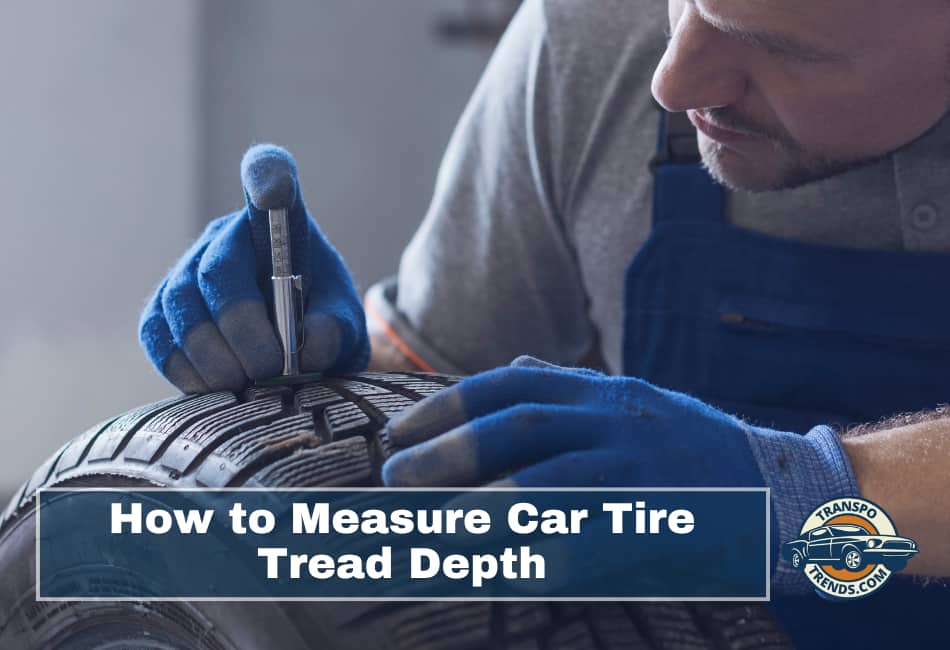Your tires are like the loyal friends who always have your back on every road trip. They take on the dirt, brave the rain, and withstand the scorching heat, all while holding tight to the road to keep you safe and steady.
But let’s be honest—when was the last time you actually checked their tread depth? If you are drawing a blank, do not worry; you are in good company.
This guide is here for every driver who wants to get a handle on tire tread depth without wading through a mechanic’s manual.
More than that, it is about giving you the peace of mind to know your tires are still safe to roll with—or when it is time to say goodbye to them.
Why Tread Depth Matters More Than You Might Think
Your tire tread is what allows your car to grip the road. As the tread wears down, so does your tire’s ability to resist hydroplaning, maintain traction in snow, and stop quickly in emergencies.
According to the National Highway Traffic Safety Administration (NHTSA), tires with tread depth below 2/32 of an inch are considered bald and unsafe.
But even before hitting that limit, performance begins to suffer. Consumer Reports found that wet braking distances increase dramatically once tires wear below 4/32 of an inch.
That means the difference between 4/32 and 2/32 could be the difference between stopping safely and skidding into an intersection.
Method 1: The Penny Test
One of the oldest tricks in the book is the penny test. It is simple, fast, and costs exactly one cent.
Here is how to do it:
- Take a U.S. penny and insert it into a tread groove with Lincoln’s head facing down.
- If you can see the top of his head, your tread is below 2/32 of an inch.
- If his head is partially covered, your tread is still above the minimum depth.
You can also use a quarter to test for 4/32 of an inch. If Washington’s head is visible, your tire is nearing its safety threshold, especially in wet conditions.
Repeat the test in multiple spots around each tire. Uneven wear could mean your alignment is off or you need a tire rotation.
Method 2: Use a Tread Depth Gauge (Recommended for Accuracy)
While the penny test is great for a quick check, a tread depth gauge offers a far more accurate measurement. These tools are small, easy to use, and inexpensive.
One highly rated option is the GODESON Color Coded Tread Depth Gauge, which gives you a clear, color-coded reading.
To use it:
- Insert the probe into the tread groove.
- Press the base flat against the tire.
- Read the measurement on the scale.
The gauge typically reads in 32nds of an inch. Here is how to interpret the results:
- 6/32″ or more: Good tread depth.
- 4/32″: Monitor closely; consider replacing soon, especially for wet driving.
- 2/32″ or less: Tire replacement needed.
Pro tip: Check multiple points on each tire—inner, center, and outer grooves. Uneven wear patterns could suggest overinflation, underinflation, or suspension issues.
Method 3: Tread Wear Indicators
Modern tires come equipped with built-in tread wear indicators. These are small raised bars located between the tread ribs. When the tread wears down to the level of these bars, it is time to replace the tire.
Look for:
- A triangle or “TWI” on the tire sidewall indicating the location of wear bars.
- Bars that are flush with the tread surface.
This method is effortless and built right into the tire, but by the time the tread meets these indicators, performance is already compromised. Think of wear bars as the “check engine” light of tire safety.
Reading the Numbers: What Car Tread Depth Means
Understanding the numbers behind tread depth gives you the power to make smart decisions.
- New tires: 10/32″ to 12/32″
- Winter tires: Replace at 6/32″ for better snow grip
- All tires: Replace at 4/32″ for wet traction, 2/32″ is the legal minimum
If you prefer metric, 2/32″ equals approximately 1.6 mm. The deeper your tread, the better your grip, especially on wet or snowy roads.
When and How Often to Check Car Thread Depth
Make it a habit to check your tread depth:
- Once a month
- Before long trips
- With every oil change
Pair it with your tire pressure check to establish a full tire maintenance routine. Use a tread depth gauge for precision and rely on the penny test for convenience.
Tips for Accurate Measurements
- Clean the tread grooves before measuring.
- Avoid measuring on wear bars, which can give inaccurate readings.
- Use the same tool every time for consistency.
- Log your measurements so you can track wear over time.
What to Do If Your Tread Is Low: If your tread depth is at or below 4/32″, begin planning for a replacement. Shop around, compare warranties, and do not forget to check your alignment and balance. Uneven wear could mean you need more than just new tires.
Final Thoughts
Checking your tire tread depth is not about being a car expert—it is about being a smart, safe driver. Whether you use a penny, a tread depth gauge, or trust the wear indicators, what matters is that you check regularly and take action when needed.
So take a few minutes this weekend. Open your garage, grab a coin or a gauge, and get to know your tires.

